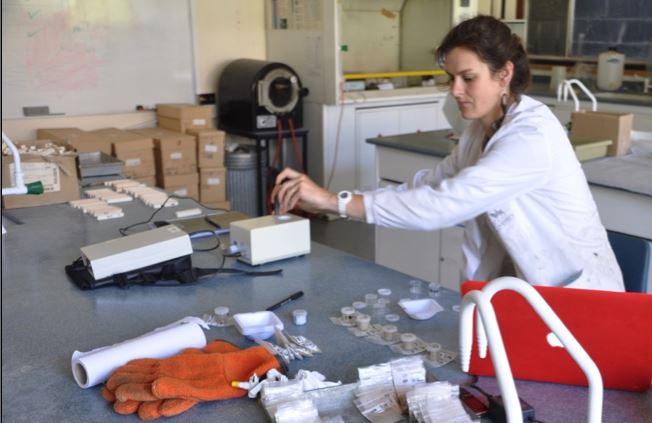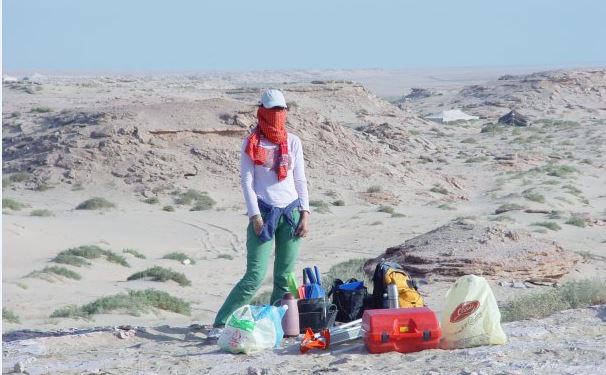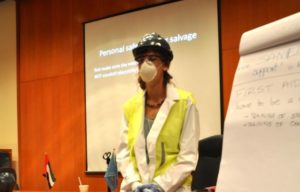
As the COVID-19 pandemic redefines what we think of as ‘normal’, archaeology and ancient history can provide some consolation about the great adaptability of our species.
and ancient historian points to responses of extreme historical events that have threatened homo sapiens in the past as evidence that society – and the economy – can, and will, spring back again.
Dr Kotarba researches global connectivity in the past through studying ancient international trade routes and human adaptation to extreme change.
She says the processes of urbanisation, population growth and proto-globalisation in the ancient world initially allowed outbreaks of infectious diseases and epidemics. These often surprisingly resulted in boosting the economy.
“The Black Death that we think killed a quarter or more of Europe and Near Eastern population in the 1300s, actually resulted, in longer term, in improvements to living and work conditions for the working classes, opened up markets and boosted the economy,” says Dr Kotarba.
Dr Kotarba says archaeological evidence shows that ancient epidemics started with the foundations of urban life and intensified with the emergence of the ancient global economy.

“The first time we recognise widespread of infectious diseases archaeologically is in the Neolithic period, when small hunter-gatherer groups moved towards a more sedentary life. The first permanent large settlements and the move towards urbanisation increased the numbers of people living at close quarters with one another and with their newly domesticated animals, that fed on waste,” says Dr Kotarba.
“This allowed for the first large spreads of zoonotic (animal-borne) diseases, such as bubonic plagues – although the first zoonotic diseases can already be observed in skeletons from about 2.8 million years ago, in one of our oldest predecessors Australopitecus Africanus.

Archaeology is showing that this is something that humans, both modern and archaic, have dealt with for millions of years and exacerbated with the move towards more modern-like lifestyles.”
The situation became more complex as far-distance trade flourished between fully urbanised cities, which developed in different parts of the world during the Bronze Age (approx. 3000-1200 BCE).
Already at this stage populations of many ancient cities reached over 100,000 people, with ancient Rome said to have reached well over 1 million people around 200 CE.
“Trade routes, often connected with the demand for exotic and luxurious goods (such as spices), were responsible for widespread outbreaks of infectious diseases in the ancient world, and in the medieval and early modern periods.
“Since the dawn of a global economy, caravans and ships connected disparate peoples, cultures and ecosystems in unprecedented ways, and therefore served as key nodes in the spread of global diseases.

This is also because there was no passenger ships in the ancient world so all travel had to be on board of merchant vessels along the trade routes. The word ‘quarantine’ itself comes in fact from the seafaring terminology.”
Dr Kotarba says homo sapiens are one of the most adaptable species on Earth, having successfully emerged from events of extreme demographic and environmental stress. This includes the Toba super-volcanic eruption of 75,000 years ago, which created a genetic bottleneck with only an estimated 3,000-10,000 people surviving on the entire planet.
She also points to the Late Roman Justinian Plague (541-542 CE) that seems to have killed between 25-50 million people. “After this, we sprung back again as a species, with more adaptable traits favoured in those who survived.”
This historical picture has become clearer thanks to biomolecular archaeology and pathogen genetics, which are now at the forefront of exploring ancient diseases, along with studying the connectivity of ancient trade routes.
The novel techniques are bringing new insights into the territorial extent and reach of various strains of viruses and bacteria – and point to the precedent of positive long-term outcomes from historical pandemics and other catastrophes.
“We are already seeing some small positive impacts of COVID-19-related lockdowns on, for example, climate change,” says Dr Kotarba.
“We are seeing people doing more gardening and striving to be closer to nature, while populist governments seem to be loosing their followers as voters are increasingly turning towards those leader who use empathy and evidence-based data to inform policies.
“Let’s hope that, like our predecessors in Ancient Egypt, Rome and medieval Britain, we will re-surface from our isolation stronger and hopefully wiser.”







